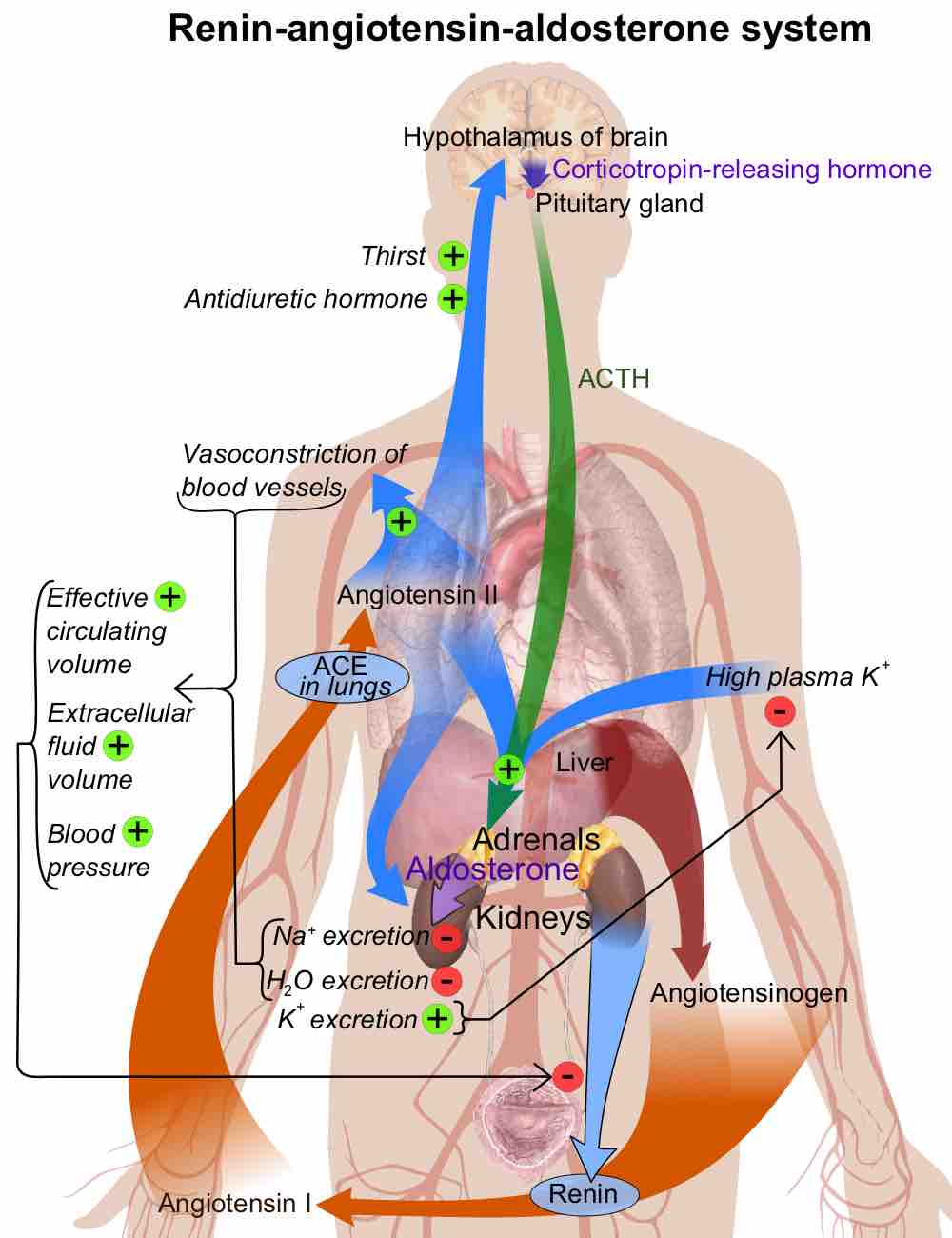Hormonal, renal, and behavioral control of body fluids function to some extent in utero. Hormonal mechanisms including the renin-angiotensin system, aldosterone, and vasopressin are involved in modifying fetal renal excretion, reabsorption of sodium and water, and regulation of vascular volume. In utero behavioral changes, such as fetal swallowing, have been suggested to be functional early in development in response to dipsogens. Since diseases, such as hypertension, can be traced to fetal origin, it is important to understand the development of fetal regulatory mechanisms for body fluid homeostasis in this early stage of life.

Schematic diagram of renin–angiotensin–aldosterone system
Overview of the renin-angiotensin system that regulates blood pressure and water (fluid) balance.
The hypothalamic-neurohypophysial system plays a fundamental role in the maintenance of body fluid homeostasis by secreting arginine vasopressin (AVP) and oxytocin (OT) in response to a variety of signals, including osmotic and non-osmotic stimuli. It is well established that central cholinergic mechanisms are critical in the regulation of cardiovascular responses and maintenance of body fluid homeostasis in adults. Recent research has demonstrated that intracerebroventricular (i.c.v.) injection of carbachol elicited an increase of blood pressure in near-term ovine fetuses. However, in utero development of brain cholinergic mechanisms in the regulation of the hypothalamic neuropeptides is largely unknown. Further research results indicate that the central cholinergic mechanism is established and functional in the regulation of the hypothalamic neuropeptides during the final trimester of pregnancy. This provides evidence for a functional link between the development of central cholinergic mechanisms and hypothalamic neuropeptide systems in the fetus.